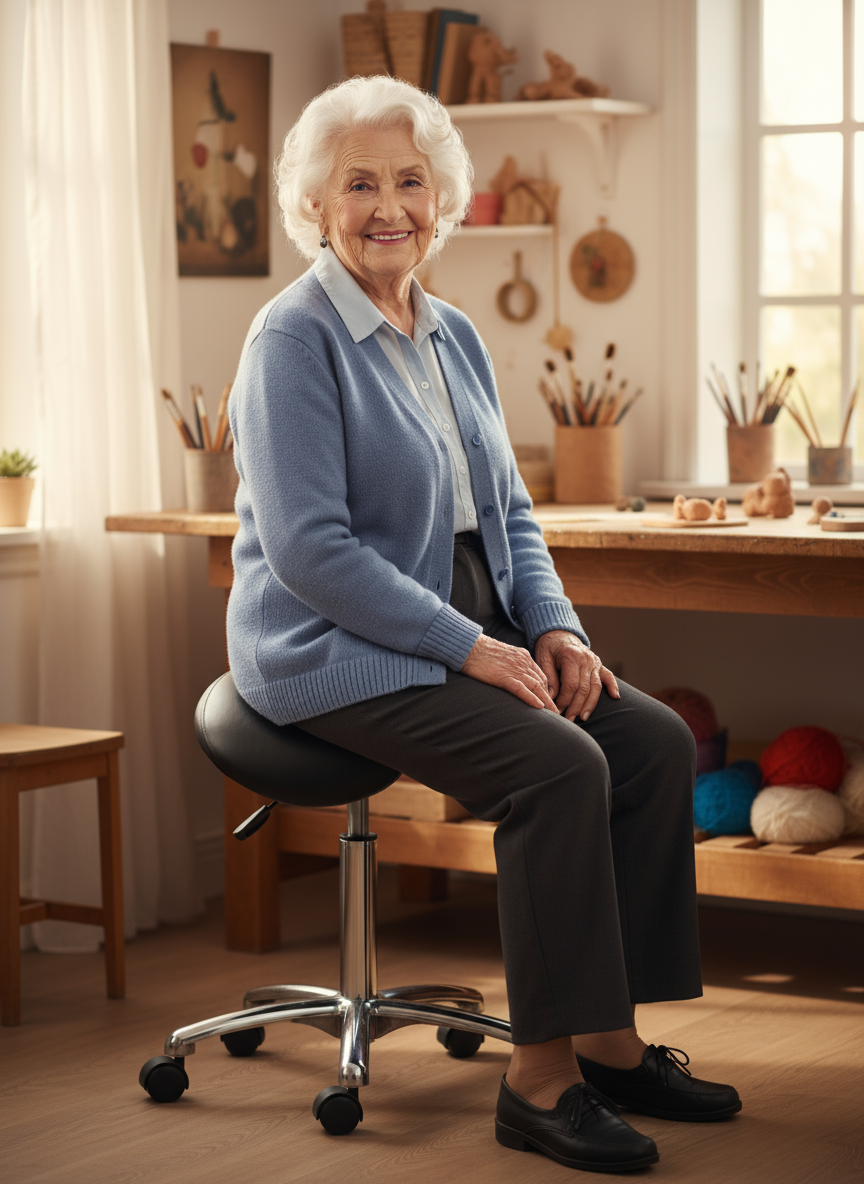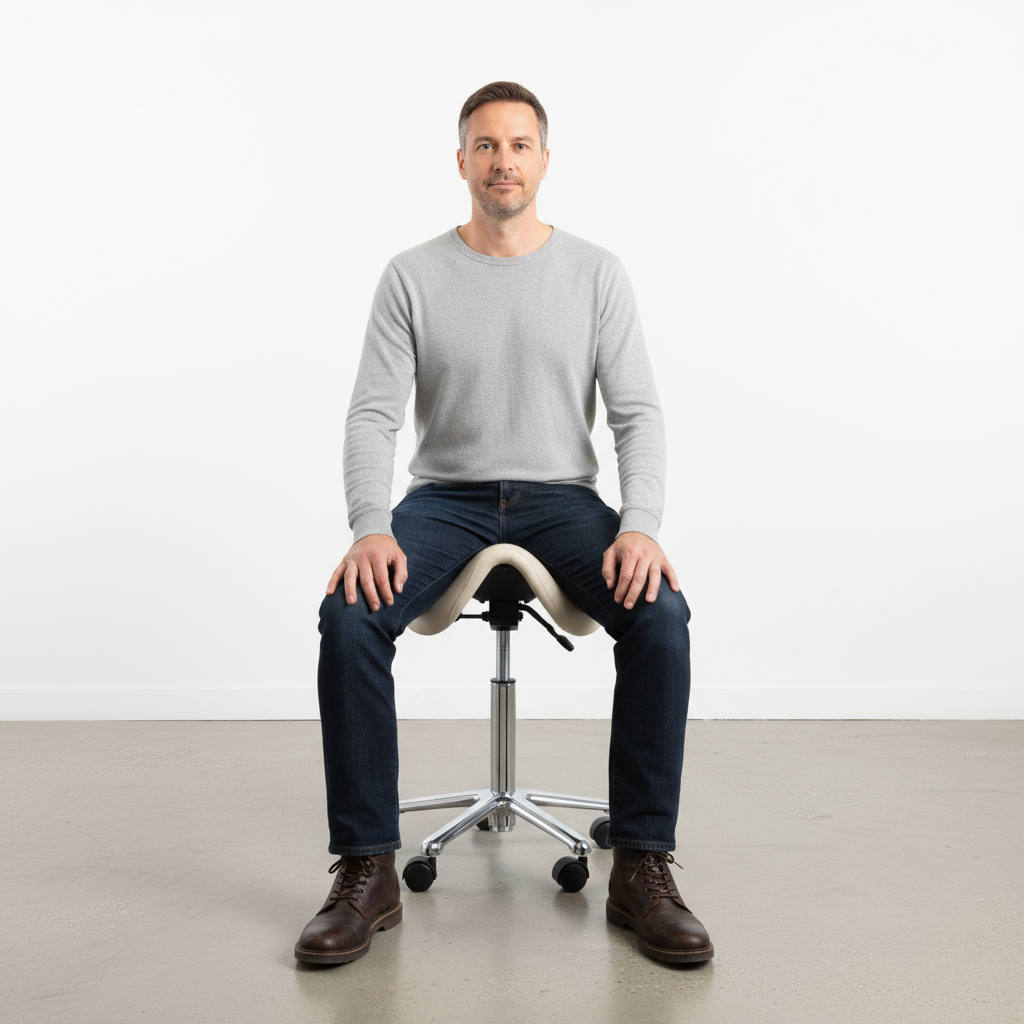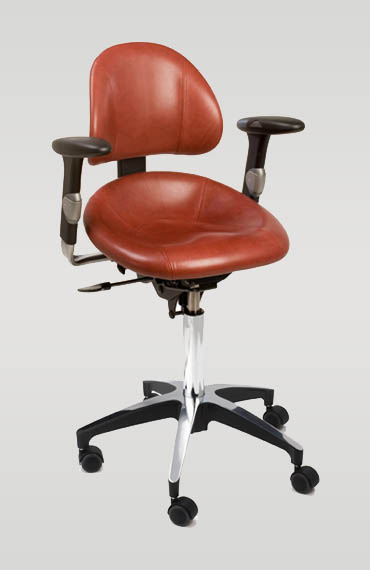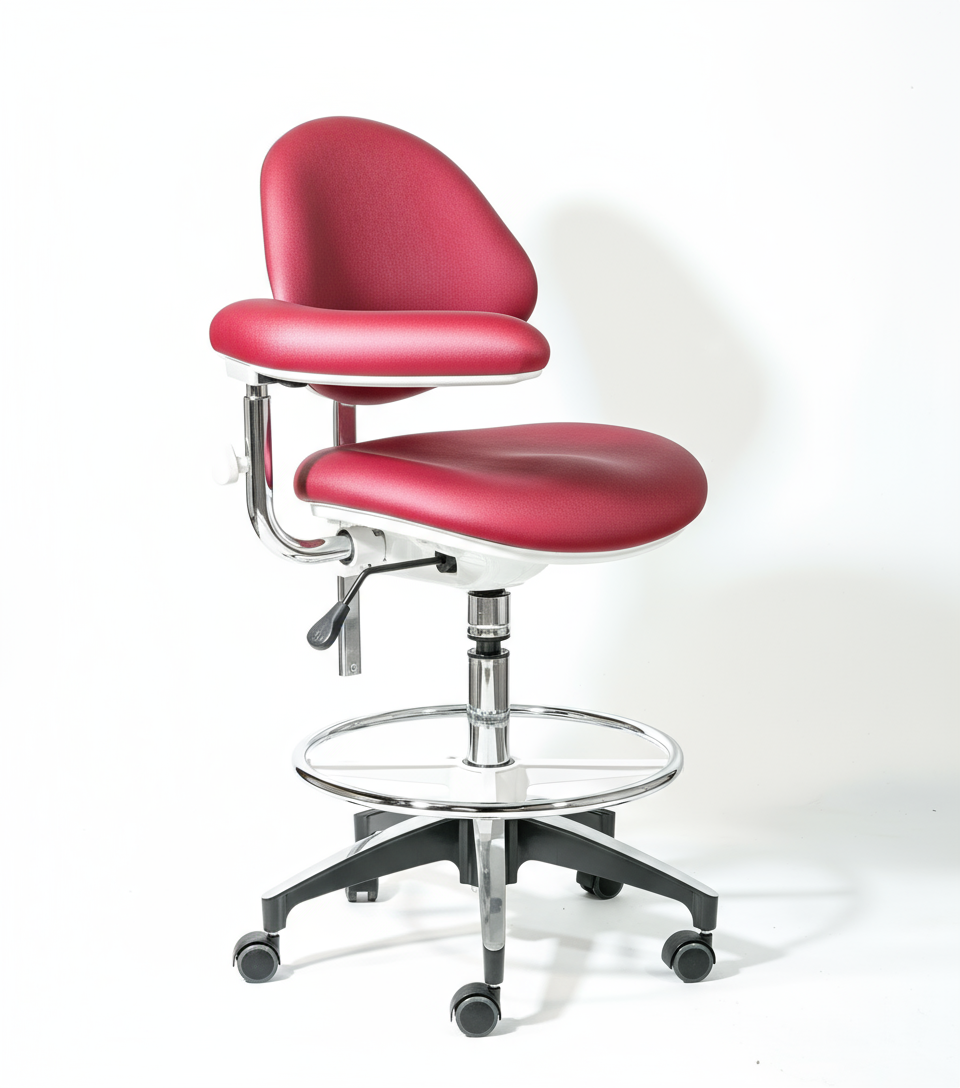Share
Sometimes the most profound wisdom comes from the simplest designs
Picture this: Your grandmother, flour dusting her apron, standing at the kitchen counter kneading bread. When her back started to ache, she didn't reach for an expensive ergonomic chair or schedule a chiropractor appointment. Instead, she simply pulled up that old wooden kitchen stool—the one with the slightly worn seat that perfectly cradled her posture.
That humble kitchen stool, passed down through generations and relegated to the corner of countless kitchens, was actually a masterpiece of ergonomic design. Long before we had fancy office chairs with lumbar support and adjustable armrests, our grandmothers intuitively understood something that modern science is just beginning to rediscover: the secret to healthy sitting isn't about more cushioning or complex mechanisms—it's about active posture and natural alignment.
The Forgotten Wisdom of Traditional Seating
Before the Industrial Revolution transformed how we work and live, people didn't struggle with the epidemic of back pain, hip discomfort, and poor posture that plagues modern office workers. Our ancestors spent their days in constant movement, and when they did sit, it was usually on simple, firm surfaces that encouraged good posture rather than the deep, cushioned chairs that seem to swallow us whole today.
Traditional kitchen stools embodied several ergonomic principles that modern furniture designers are only now beginning to appreciate:
The "Perch" Principle
Unlike deep office chairs that encourage slouching, grandmother's stool was designed for perching. This positioning naturally engaged the core muscles, promoted better breathing, and encouraged frequent position changes—all hallmarks of what we now call active sitting.
Firm Support Over Soft Comfort
The solid wooden seat provided firm support that maintained the natural curves of the spine. While cushioned chairs might feel more comfortable initially, they often lead to poor posture as we sink into them throughout the day.
Height Versatility
Most traditional stools were the perfect height for various kitchen tasks—high enough to provide good leverage at the counter, yet low enough to maintain contact with the floor for stability. This natural height promoted better circulation and reduced pressure on the lower back.
What Modern Science Tells Us About Traditional Design
Recent ergonomic research has validated what our grandmothers knew instinctively. Studies show that active sitting—the type of posture encouraged by simple stools—offers significant advantages over passive sitting in traditional office chairs:
- Improved Core Engagement: Without back support, your core muscles work continuously to maintain posture, strengthening your natural "internal corset."
- Better Circulation: The slightly forward-tilted pelvis position promotes better blood flow throughout the body.
- Reduced Hip Flexor Tightness: The open hip angle prevents the shortening of hip flexors that contributes to lower back pain.
- Enhanced Focus: The subtle muscle engagement required for balance can actually improve mental alertness and concentration.
Dr. Joan Vernikos, former director of NASA's Life Sciences Division, has extensively studied the health impacts of sitting. Her research suggests that our ancestors' more active lifestyle, including their simple seating choices, contributed to their lower rates of metabolic disorders and musculoskeletal problems.
The Modern Revival: From Kitchen to Office
Today's ergonomic experts are rediscovering these time-tested principles and applying them to modern seating solutions. Saddle chairs, balance ball chairs, and standing desk converters all draw inspiration from the active sitting principles that grandmother's kitchen stool embodied.
However, the transition from traditional office chairs to more active seating options requires patience and gradual adaptation. Just as our grandmothers built up their tolerance for standing and perching through daily practice, modern workers need time to develop the core strength and postural awareness that active sitting requires.
Tips for Transitioning to Active Sitting:
- Start with short periods—even 15-30 minutes can make a difference
- Focus on maintaining a neutral spine rather than perfect posture
- Take frequent breaks to stand and stretch
- Listen to your body and adjust as needed
- Remember that some initial muscle fatigue is normal as your core strengthens
Beyond Nostalgia: Practical Applications Today
The lessons from grandmother's kitchen stool extend far beyond mere nostalgia. As we spend increasing hours at desks and computers, understanding these traditional ergonomic principles becomes crucial for maintaining our health and productivity.
Modern ergonomic seating that embraces these traditional concepts—such as saddle stools for office work, ergonomic kitchen stools for cooking, and active sitting chairs for study—offer a bridge between ancestral wisdom and contemporary needs.
The key is recognizing that comfort and health aren't always synonymous. The temporary discomfort of adjusting to more active seating often leads to long-term benefits in posture, core strength, and overall wellbeing—just as it did for our grandmothers who never thought twice about perching on a simple wooden stool while preparing family meals.
Bringing Ancient Wisdom Into the Modern Workplace
As workplace wellness becomes increasingly important, many forward-thinking companies are incorporating active seating options into their office designs. The simple principles that made grandmother's kitchen stool so effective—firm support, proper height, and encouragement of natural movement—are being integrated into contemporary ergonomic solutions.
This isn't about abandoning all modern conveniences or returning to an romanticized past. Instead, it's about recognizing that some of our ancestors' simple solutions were, quite literally, ahead of their time. By combining traditional ergonomic wisdom with modern materials and manufacturing techniques, we can create seating solutions that support both our health and our productivity.
The next time you see an old kitchen stool, take a moment to appreciate the ergonomic genius of its simple design. Your grandmother may not have had a degree in kinesiology, but she understood something profound about the human body that we're only now beginning to rediscover.
Sometimes the best innovations aren't about creating something entirely new—they're about remembering what we once knew and finding ways to apply that wisdom to our modern lives. In the case of healthy sitting, that wisdom was there all along, waiting patiently in the corner of the kitchen, ready to teach us once again.




